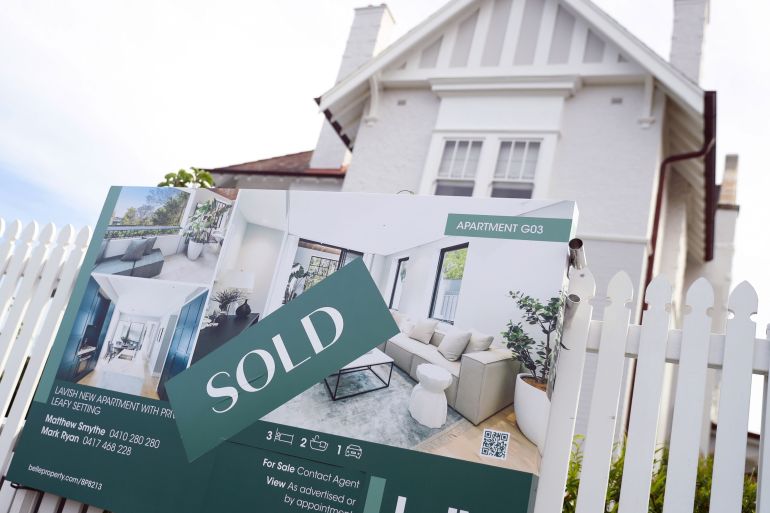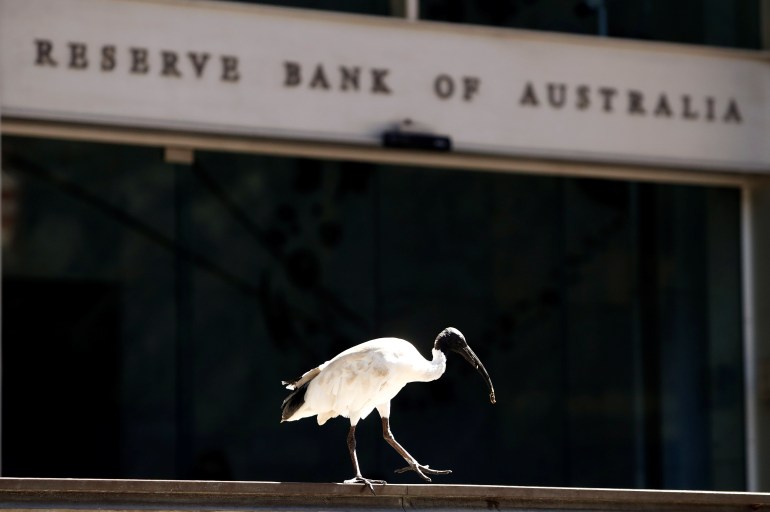In property-mad Australia, borrowers brace for pricier mortgages
The Reserve Bank of Australia is expected to announce multiple increases in its benchmark interest rate this year.

Sydney, Australia – Maryam Zafar, a software engineer who lives with her partner and two young children in western Sydney, worries that higher mortgage repayments may soon force her family to cut costs.
After migrating from Pakistan six years ago with the dream of owning a house in Australia, Zafar and her partner got on the property ladder in December 2020.
Keep reading
list of 4 itemsIsraeli attack on the Gaza Strip as tensions soar in Jerusalem
US judge overturns mandatory mask mandate on planes, trains
Can Narendra Modi stop hate speech in India?
The couple currently pay 3,200 Australian dollars ($2,359) each month in mortgage payments alongside expenses ranging from groceries and petrol to their daughter’s cricket club fees.
“When we purchased [the property], the interest rate was at the minimum, so we thought it would be a good time to purchase,” Zafar, 39, told Al Jazeera, recalling that a month before buying the property, Australia’s central bank had dropped its benchmark interest rate to 0.1 percent to boost the economy during the pandemic.
At the time of buying, the couple estimated they could pay off their mortgage in less than a decade without cutting back on other expenses.
But as Australia’s central bank looks to hike interest rates to tame rising inflation, the Zafar family and millions of other borrowers across Australians are bracing for higher payments in the months and years ahead.

The Reserve Bank of Australia earlier this month opened the door to raising its benchmark interest rate, currently at 0.1 percent, for the first time since 2010, after previously vowing to be “patient” on tightening policy. A higher benchmark rate – the rate of interest charged on loans between banks – typically leads to higher borrowing costs for mortgage holders and other borrowers.
RateCity, a financial comparison website, has calculated that a homeowner with a $500,000, 25-year mortgage paying the lowest variable interest rate could have to pay $500 more each month by the end of 2023 due to higher interest rates.
In a survey carried out by the Finance Brokers Association of Australia last year, more than half of respondents said they would not be able to keep up with payments if rates were to rise by 1 percent, with 56 percent saying they would need to look at refinancing their home.
Angel Zhong, an associate professor of finance at RMIT University, said many recent first-home buyers and young families could struggle to adjust their budgets after planning their personal finances around ultra-low interest rates.
“The implication is that the interest rate will increase, but people’s living costs have also increased. However, their wages have not increased,” Zhong told Al Jazeera.
While relatively modest, Australia’s inflation of 3.5 percent in 2021 outpaced wages, which only grew 2.3 percent.

Shravan Nagesh, a 29-year-old pilot and transportation business owner, bought a property in Sydney in August 2020 as his future family house, and is currently renting out the property to generate passive income.
After facing record petrol prices that have put pressure on his business, Nagesh is now worried about the prospect of higher interest rates.
“Whatever I’m receiving through the rent would go entirely for the mortgage repayment, and I wouldn’t have that passive income from that property,” Nagesh told Al Jazeera.
Nagesh is currently paying $1,578 a month on his mortgage, but has been informed by his bank and his accountant that he might end up paying an extra $900 depending on how high interest rates rise.
“At the moment, everyone well understands that the interest rates are going to rise, but the concern for me is the uncertainty behind it,” he said. “Basically, I’m concerned about when it will rise, by how much it’s going to rise, and for how long it’s going to rise?”
Australia is among the top five countries with the highest levels of household debt, with the average household owing the equivalent of 203 percent of net disposable income, according to OECD data.
Nicolas Herault, an associate professor of economics at the University of Melbourne, said ultra-low interest rates in recent years and relatively flexible lending practices had encouraged Australians to buy rather than rent.
Before the benchmark interest rate dropped close to zero in 2020, Australia’s interest rate had gone as high as 4.75 percent in 2010.
“[There is an] Australian dream and people’s aspiration to be homeowners,” Herault told Al Jazeera.
Election issue
Ahead of a federal election on May 9, Australia’s political parties have rolled out various pledges to tackle rising costs which also include years of soaring house prices. In its most recent budget, the incumbent Liberal-National government announced cuts to fuel taxes to reduce growing financial pressure on households, as well as the expansion of a scheme that allows first-time buyers to borrow up to 95 per cent of the cost of a property without having to buy mortgage insurance.
For mortgage holders, though, financial pressures look set to grow.
Australia’s leading banks all predict multiple rate hikes this year to take the key rate to 1 percent or more, while financial markets have priced in a benchmark rate of 1.75 percent by year’s end and 3 percent by late 2023.
Earlier this month, the Reserve Bank warned property prices could fall as much as 15 percent if rates rise in line with market expectations – leaving many borrowers owing more money than their property is worth.
Zhong, the RMIT University professor, said raising rates gradually would help mortgage holders adapt to the higher costs.
“Increasing interest rates is essential if we want to control inflation,” she said. “But maybe this increase of interest rates needs to be implemented gradually.”